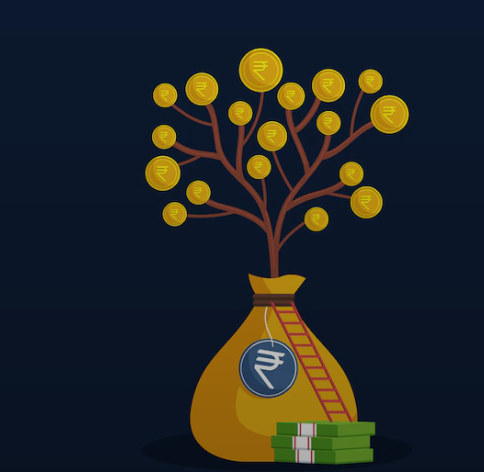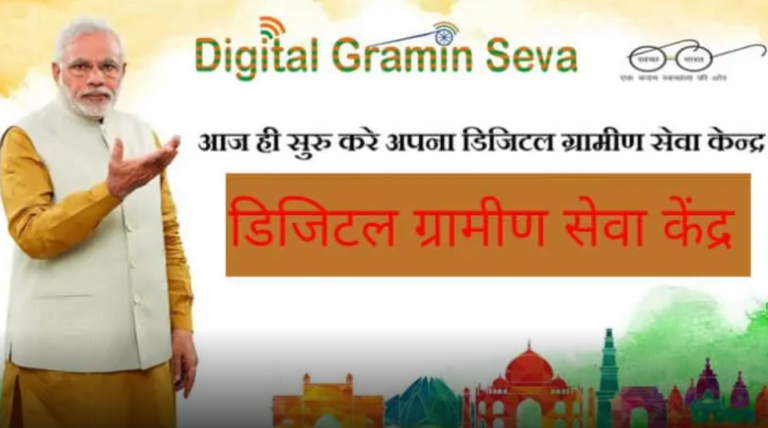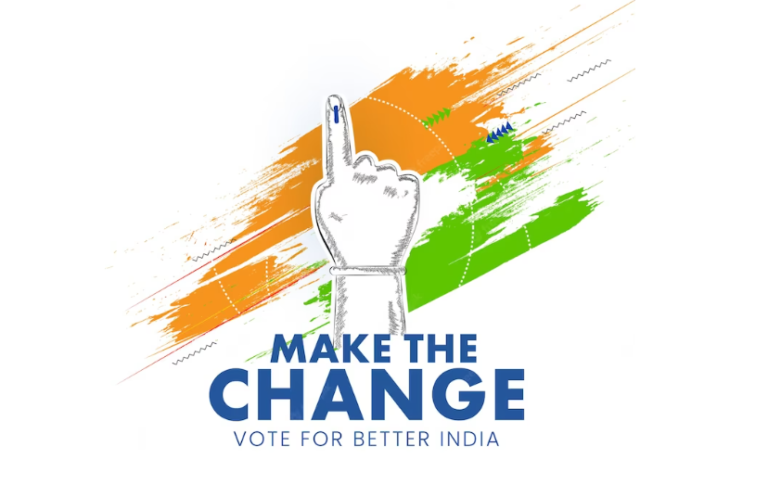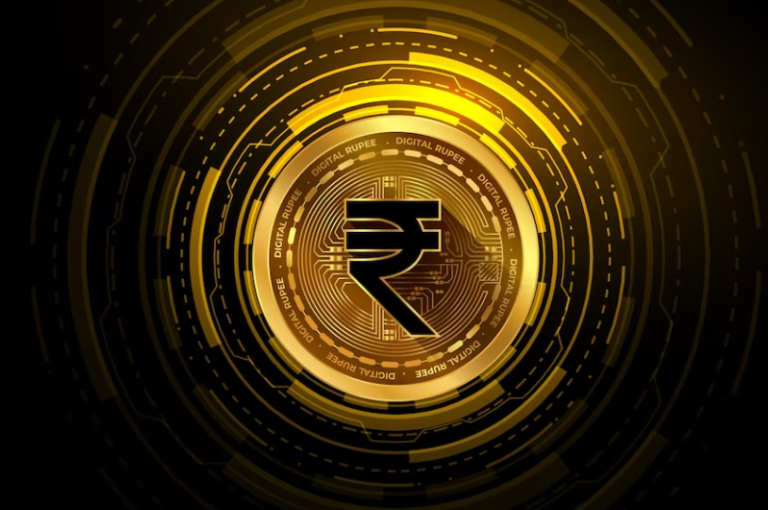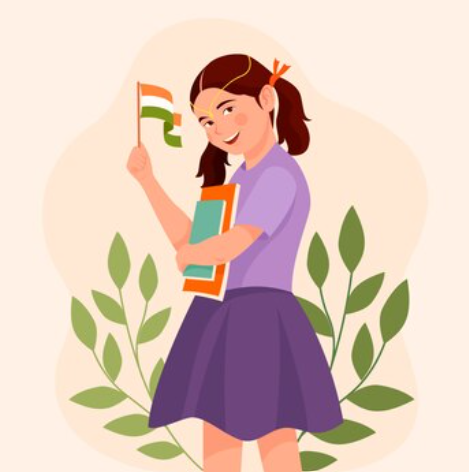
महिला उच्च शिक्षा के लिए भारत में भारत सरकार की योजना क्या है? | What is the Indian Government Scheme in India for Women Higher Education?
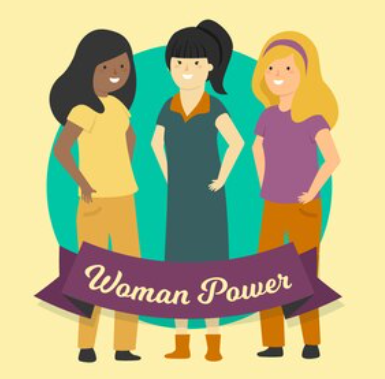
Education is the key to success, and it is essential for the development of any country. The Indian Government has taken several initiatives to promote education among women, especially in higher education. The Government has launched various schemes to empower women and provide them with equal opportunities. In this article, we will discuss the Indian Government’s scheme in India for women’s higher education.
Introduction to the Indian Government Scheme for Women Higher Education
The Indian Government has introduced several schemes to empower women and promote their education. One of the key focus areas of these schemes is higher education for women, as education is considered a crucial tool for the empowerment of women. These schemes aim to provide financial support to women pursuing higher education and encourage them to pursue their academic goals without any financial constraints. By empowering women through education, these schemes aim to create a more inclusive and equitable society, where women can participate and contribute to the development of the nation on an equal footing with men. In this article, we will explore the Indian Government Scheme for Women Higher Education in detail, including its objectives, benefits, eligibility criteria, application process, and more.
Objectives of the Scheme
The Indian Government Scheme for Women Higher Education has several key objectives, which include:
- Providing financial support to women pursuing higher education: The scheme aims to provide financial assistance to women pursuing higher education to reduce their financial burden and enable them to focus on their studies.
- Promoting gender equality: By empowering women through education, the scheme aims to promote gender equality and create a more inclusive and equitable society.
- Encouraging women to pursue higher education: The scheme aims to encourage more women to pursue higher education by providing financial assistance and creating awareness about the importance of education.
- Increasing the enrollment of women in higher education: The scheme aims to increase the enrollment of women in higher education by providing financial assistance and other support.
- Improving the overall quality of higher education: The scheme aims to improve the overall quality of higher education by promoting the education of women, who can contribute to the development of the nation.
Overall, the scheme aims to create a more educated and empowered society, where women can participate and contribute to the development of the nation on an equal footing with men.
What Are the Women Empowerment Schemes in India?
India has launched several schemes and programs to empower women and provide them with equal opportunities. These schemes aim to improve women’s social and economic status, increase their participation in decision-making processes, and enhance their access to education and employment opportunities. In this article, we will discuss some of the major women empowerment schemes in India.
-
Beti Bachao Beti Padhao Scheme
Beti Bachao Beti Padhao (BBBP) is a flagship program launched by the Indian Government in 2015 to address the declining sex ratio and promote the education of girls. The scheme aims to change societal attitudes towards the girl child and create an enabling environment for their education and empowerment. The scheme focuses on three major areas: prevention of gender-biased sex-selective elimination, ensuring the survival and protection of the girl child, and enhancing the education and participation of girls.
-
Pradhan Mantri Matru Vandana Yojana
Pradhan Mantri Matru Vandana Yojana (PMMVY) is a maternity benefit scheme launched in 2017 to provide financial assistance to pregnant and lactating women. Under the scheme, eligible women receive a cash incentive of Rs. 5,000 in three installments upon the completion of specific stages of pregnancy and childbirth. The scheme aims to promote the health and nutrition of pregnant and lactating women and reduce maternal mortality and morbidity rates.
-
Mahila E-Haat
Mahila E-Haat is an online marketing platform launched in 2016 to promote women entrepreneurs and their products. The platform provides a virtual marketplace for women to showcase and sell their products and services, thereby enhancing their access to markets and customers. The scheme aims to create a conducive environment for women’s entrepreneurship and enable them to become self-reliant and economically empowered.
-
Pradhan Mantri Ujjwala Yojana
Pradhan Mantri Ujjwala Yojana (PMUY) is a social welfare scheme launched in 2016 to provide clean cooking fuel to women living below the poverty line. Under the scheme, eligible women receive a free LPG connection and a subsidy on the gas cylinder refill. The scheme aims to promote the health and well-being of women and children by reducing their exposure to smoke and pollutants from traditional cooking fuels.
-
National Rural Livelihoods Mission
The National Rural Livelihoods Mission (NRLM) is a poverty alleviation scheme launched in 2011 to empower rural women and improve their livelihoods. The scheme aims to provide sustainable livelihood opportunities to rural women through skill development, capacity building, and access to credit and markets. The scheme focuses on organizing women into self-help groups and promoting their participation in decision-making processes.
-
Sukanya Samriddhi Yojana
Sukanya Samriddhi Yojana (SSY) is a savings scheme launched in 2015 to promote the education and welfare of the girl child. Under the scheme, parents or guardians of a girl child can open a savings account in her name and make deposits until she turns 18 years old. The scheme offers a high rate of interest and tax benefits on the deposits. The scheme aims to create a financial asset for the girl child and encourage her education and empowerment.
-
One Stop Centre Scheme:
This scheme provides support services to women affected by violence, including medical assistance, legal aid, counseling, and shelter.
-
Working Women Hostel Scheme:
This scheme provides safe and affordable accommodation for working women, including single women and widows.
-
Swadhar Greh Scheme:
This scheme provides shelter, food, and counseling to women who are in difficult circumstances, such as widows, victims of domestic violence, and trafficking survivors.
-
Nari Shakti Puraskar:
This award is given to women who have made significant contributions to society and women’s empowerment in India.
-
Women Helpline Scheme:
This scheme provides a 24/7 toll-free helpline for women in distress to seek help and support.
-
Udyogini Scheme:
This scheme provides training and support to women to set up their own businesses and become self-reliant.
-
STEP Scheme:
This scheme provides skill development training to women in various sectors, including agriculture, healthcare, and handicrafts.
-
Stree Shakti Package for Women Entrepreneurs:
This scheme provides financial support to women entrepreneurs through concessional loans, credit facilities, and marketing support.
-
Rashtriya Mahila Kosh:
This scheme provides credit facilities to women entrepreneurs, especially those from marginalized communities.
-
Support to Training and Employment Programme for Women (STEP):
This scheme aims to provide vocational training and employment opportunities for women to become self-reliant.
-
Annapurna Scheme:
This scheme provides food security to senior citizens who are not covered under the National Food Security Act.
-
Indira Gandhi Matritva Sahyog Yojana:
This scheme provides financial assistance to pregnant and lactating mothers for their first two live births.
-
Pradhan Mantri Awas Yojana – Gramin (PMAY-G):
This scheme provides affordable housing to rural households, especially those headed by women.
-
Nai Roshni Scheme:
This scheme provides skill development training to minority women, including those from backward communities, to enable them to become self-reliant.
Conclusion
Women empowerment schemes in India aim to improve women’s social and economic status, increase their participation in decision-making processes, and enhance their access to education and employment opportunities. The schemes discussed in this article are a step towards achieving these goals and creating a more gender-equal society. However, there is still a long way to go in addressing the challenges faced by women in India and achieving gender parity.
Who Are the Beneficiaries of This Scheme?
- Beti Bachao Beti Padhao Scheme: The beneficiaries of this scheme are girl children and their families.
- Pradhan Mantri Matru Vandana Yojana: The beneficiaries of this scheme are pregnant and lactating mothers.
- Mahila E-Haat: The beneficiaries of this scheme are women entrepreneurs who sell their products and services online.
- Pradhan Mantri Ujjwala Yojana: The beneficiaries of this scheme are poor households, especially women who use traditional cooking fuels.
- National Rural Livelihoods Mission: The beneficiaries of this scheme are rural women who want to earn a livelihood.
- Sukanya Samriddhi Yojana: The beneficiaries of this scheme are girl children, specifically those who are below the age of 10 years.
- One Stop Centre Scheme: The beneficiaries of this scheme are women affected by violence.
- Working Women Hostel Scheme: The beneficiaries of this scheme are working women, including single women and widows.
- Swadhar Greh Scheme: The beneficiaries of this scheme are women who are in difficult circumstances, such as widows, victims of domestic violence, and trafficking survivors.
- Nari Shakti Puraskar: The beneficiaries of this scheme are women who have made significant contributions to society and women’s empowerment in India.
- Women Helpline Scheme: The beneficiaries of this scheme are women in distress who seek help and support.
- Udyogini Scheme: The beneficiaries of this scheme are women who want to set up their own businesses and become self-reliant.
- STEP Scheme: The beneficiaries of this scheme are women who want to undergo skill development training.
- Stree Shakti Package for Women Entrepreneurs: The beneficiaries of this scheme are women entrepreneurs who want to avail of financial support.
- Rashtriya Mahila Kosh: The beneficiaries of this scheme are women entrepreneurs, especially those from marginalized communities.
- Support to Training and Employment Programme for Women (STEP): The beneficiaries of this scheme are women who want to undergo vocational training and employment.
- Annapurna Scheme: The beneficiaries of this scheme are senior citizens who are not covered under the National Food Security Act.
- Indira Gandhi Matritva Sahyog Yojana: The beneficiaries of this scheme are pregnant and lactating mothers.
- Pradhan Mantri Awas Yojana – Gramin (PMAY-G): The beneficiaries of this scheme are rural households, especially those headed by women.
- Nai Roshni Scheme: The beneficiaries of this scheme are minority women, including those from backward communities, who want to undergo skill development training.
What Is the Eligibility Criteria to Avail the Benefits of This Scheme?
The eligibility criteria to avail the benefits of women empowerment schemes in India vary depending on the specific scheme. Here is a general overview of the eligibility criteria for some popular schemes:
- Beti Bachao Beti Padhao Scheme: The scheme is open to all girl children and their families.
- Pradhan Mantri Matru Vandana Yojana: Pregnant and lactating mothers who are above the age of 19 years and are giving birth to their first or second child are eligible for the scheme.
- Mahila E-Haat: The scheme is open to all women entrepreneurs who sell their products and services online.
- Pradhan Mantri Ujjwala Yojana: The scheme is open to poor households, especially women who use traditional cooking fuels.
- National Rural Livelihoods Mission: The scheme is open to rural women who want to earn a livelihood.
- Sukanya Samriddhi Yojana: The scheme is open to girl children below the age of 10 years.
- One Stop Centre Scheme: The scheme is open to women affected by violence.
- Working Women Hostel Scheme: The scheme is open to working women, including single women and widows.
- Swadhar Greh Scheme: The scheme is open to women who are in difficult circumstances, such as widows, victims of domestic violence, and trafficking survivors.
- Nari Shakti Puraskar: The scheme is open to women who have made significant contributions to society and women’s empowerment in India.
- Women Helpline Scheme: The scheme is open to all women in distress who seek help and support.
- Udyogini Scheme: The scheme is open to women who want to set up their own businesses and become self-reliant.
- STEP Scheme: The scheme is open to women who want to undergo skill development training.
- Stree Shakti Package for Women Entrepreneurs: The scheme is open to women entrepreneurs who want to avail of financial support.
- Rashtriya Mahila Kosh: The scheme is open to women entrepreneurs, especially those from marginalized communities.
- Support to Training and Employment Programme for Women (STEP): The scheme is open to women who want to undergo vocational training and employment.
- Annapurna Scheme: The scheme is open to senior citizens who are not covered under the National Food Security Act.
- Indira Gandhi Matritva Sahyog Yojana: Pregnant and lactating mothers are eligible for the scheme.
- Pradhan Mantri Awas Yojana – Gramin (PMAY-G): The scheme is open to rural households, especially those headed by women.
- Nai Roshni Scheme: Minority women, including those from backward communities, are eligible for the scheme if they want to undergo skill development training.
What Is the Application Process to Avail This Scheme?
The application process to avail women empowerment schemes in India varies depending on the specific scheme. However, here are some general steps that you may have to follow to apply for the schemes:
- Identify the Scheme: The first step is to identify the scheme that you want to apply for. You can find information about the scheme on the official website of the respective government department or through local government offices.
- Check Eligibility: Once you have identified the scheme, check the eligibility criteria. Make sure you meet all the eligibility criteria before applying.
- Gather Required Documents: Gather all the required documents as per the scheme. This may include identity proof, income proof, address proof, and other relevant documents.
- Fill in the Application Form: Fill in the application form for the scheme. Make sure you provide all the necessary information accurately.
- Submit the Application: After filling in the application form, submit it along with the required documents to the relevant government department or office.
- Wait for Approval: Once you have submitted the application, wait for the approval. The time taken for approval may vary depending on the scheme and the number of applications received.
- Receive the Benefits: If your application is approved, you will receive the benefits of the scheme as per the guidelines.
It is important to note that the application process may vary depending on the specific scheme, and you should refer to the official guidelines and instructions before applying for any scheme.
What Are the Documents Required to Apply for This Scheme?
- Identity Proof: You may need to provide a government-issued identity proof such as Aadhaar Card, Voter ID, Passport, or Driving License.
- Address Proof: You may need to provide an address proof such as a utility bill, bank statement, or a government-issued address proof.
- Income Proof: You may need to provide income proof such as salary slip, income tax return, or a certificate from a government authority.
- Caste Certificate: If you belong to a reserved category, you may need to provide a caste certificate.
- Educational Qualification Certificates: If the scheme is related to education, you may need to provide educational qualification certificates.
- Bank Account Details: You may need to provide your bank account details such as bank account number, IFSC code, and branch name to receive the benefits of the scheme.
It is important to note that the documents required may vary depending on the specific scheme, and you should refer to the official guidelines and instructions before applying for any scheme.
What Is the Application Process to Avail This Scheme?
- Check Eligibility: Before applying for any scheme, you should check the eligibility criteria to ensure that you meet all the requirements.
- Obtain Application Form: You can obtain the application form either online or offline, depending on the scheme. The application form may be available on the official website of the scheme or at the designated office.
- Fill in Application Form: Once you have obtained the application form, fill in all the required details accurately and completely.
- Attach Required Documents: Attach all the required documents, as specified in the application form or official guidelines.
- Submit Application Form: Submit the completed application form along with all the required documents either online or at the designated office.
- Track Application Status: You can track the status of your application either online or by contacting the designated office.
- Receive Benefits: Once your application is approved, you will receive the benefits of the scheme either in your bank account or through other means specified in the scheme guidelines.
It is important to note that the application process may vary depending on the specific scheme, and you should refer to the official guidelines and instructions before applying for any scheme.
Eligibility Criteria for the Scheme
To avail the benefits of the Indian Government Scheme for Women Higher Education, applicants must meet the following eligibility criteria:
- Applicant must be a woman: Only female applicants are eligible to apply for the scheme.
- Applicant must be an Indian citizen: Only Indian citizens are eligible to apply for the scheme.
- Applicant must have completed her secondary education: The applicant must have completed her secondary education or equivalent from a recognized board or university.
- Applicant must have enrolled in a recognized higher education institution: The applicant must have enrolled in a recognized higher education institution in India.
- Applicant must not have received any other scholarship or financial assistance: The applicant must not have received any other scholarship or financial assistance for the same course from any other source.
- Applicant must not be employed: The applicant must not be employed while pursuing the course for which she is seeking financial assistance under the scheme.
It is important to note that the eligibility criteria may vary depending on the specific scheme, and applicants should refer to the official guidelines and instructions before applying for the scheme.
Benefits of the Scheme
The Indian Government Scheme for Women Higher Education provides several benefits to eligible applicants, including:
- Financial assistance: The scheme provides financial assistance to women pursuing higher education, which covers the tuition fee, examination fee, and other related expenses.
- Stipend: In addition to the financial assistance, eligible applicants may also receive a monthly stipend to cover their living expenses while pursuing the course.
- Study material: The scheme also provides study material and books to eligible applicants, which can help reduce the cost of education.
- Support for disabilities: The scheme also provides support for women with disabilities, such as assistive devices, special coaching, and other necessary arrangements to enable them to pursue higher education.
- Travel expenses: The scheme also covers the travel expenses of eligible applicants, such as the cost of travel to and from the institution, and any other related expenses.
- Professional development: The scheme also provides opportunities for professional development, such as internships, workshops, and training programs, to help eligible applicants gain valuable skills and experience.
Overall, the scheme aims to provide comprehensive financial support and other resources to eligible women, enabling them to pursue their academic goals without any financial constraints and contribute to the development of the nation.
Challenges Faced by Women in Higher Education in India
Despite the government’s efforts to promote women’s education through various schemes, women in India still face several challenges when it comes to pursuing higher education. Some of the common challenges faced by women in higher education in India are:
- Societal pressure: Women in India face significant societal pressure to conform to traditional gender roles, which often prioritizes domestic responsibilities over education. This pressure can often discourage women from pursuing higher education or continuing their studies.
- Lack of infrastructure: Many educational institutions in India lack basic infrastructure, such as safe transportation, clean toilets, and secure accommodation, making it difficult for women to attend college or university.
- Safety concerns: Women in India often face safety concerns, including sexual harassment, assault, and discrimination, which can make them feel unsafe and unwelcome in educational institutions.
- Financial constraints: Many women in India come from economically disadvantaged backgrounds, which can make it difficult for them to afford the high cost of higher education. This financial constraint can often force women to drop out of school or university and seek employment.
- Limited access to information: Many women in India have limited access to information about higher education opportunities and financial assistance available to them, which can often limit their options and make it difficult for them to pursue their academic goals.
- Limited representation: Women in India are often underrepresented in educational institutions, particularly in fields such as science, technology, engineering, and mathematics (STEM), which can limit their opportunities for career advancement.
It is important to address these challenges and create a supportive and inclusive environment that enables women to pursue their academic goals and contribute to the development of the nation.
Impact of the Scheme on Women’s Higher Education in India
The Indian Government Scheme for Women Higher Education has had a significant impact on women’s education in the country. The scheme has enabled more women to pursue higher education, leading to improved employment opportunities and economic empowerment. Some of the major impacts of the scheme are:
- Increase in enrollment: The scheme has resulted in a significant increase in the enrollment of women in higher education institutions in India. This increase in enrollment has contributed to the overall improvement of the literacy rate of women in the country.
- Access to education: The scheme has provided greater access to education for women in India, particularly those from economically disadvantaged backgrounds. This has enabled more women to pursue their academic goals and achieve their full potential.
- Financial assistance: The scheme has provided financial assistance to women pursuing higher education, which has made it possible for them to afford the high cost of education. This financial assistance has enabled many women to continue their studies and complete their degree programs.
- Career opportunities: The scheme has enabled women to pursue higher education in various fields, including science, technology, engineering, and mathematics (STEM), which has led to improved employment opportunities and career advancement.
- Empowerment: The scheme has empowered women by enabling them to become financially independent and contributing members of society. This empowerment has resulted in greater gender equality and a more inclusive society.
In conclusion, the Indian Government Scheme for Women Higher Education has had a significant impact on women’s education in India. The scheme has enabled more women to pursue higher education, leading to improved employment opportunities, economic empowerment, and greater gender equality.
Frequently Asked Questions (FAQs) about the Scheme
7.1 What is the Indian Government Scheme for Women Higher Education?
- The Indian Government Scheme for Women Higher Education is a scheme launched by the Government of India to provide financial assistance to women pursuing higher education.
7.2 How to Apply for the Scheme?
- The interested candidates can apply for the scheme through the National Scholarship Portal (NSP).
7.3 Is there any Age Limit for the Scheme?
- Yes, the age limit for the scheme is 30 years.
7.4 What are the Benefits of the Scheme?
- The benefits of the scheme include financial assistance, skill development, mentorship programs, and support for research and innovation.
7.5 Can Men also Apply for the Scheme?
- No, the scheme is exclusively for women pursuing higher education.
Conclusion:
The Indian Government Scheme for Women Higher Education is a step towards women empowerment and bridging the gender gap in higher education. The scheme has helped many women in pursuing their dreams and achieving their goals. However, there are still challenges that need to be addressed, such as societal pressures and lack of infrastructure.
